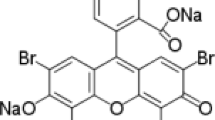Abstract
An experiment was designed to address the validity of the prescribed maximum allowable holding-time limit of 14 days when acidified at < 2 pH and maintained at 4°C to prevent significant loss of benzene, toluene, ethyl benzene, and xylenes (BTEX) in preserved water samples. Preservation methods prescribed by the United State Environmental Protection Agency were used as well as adaptions of that procedure to determine stability between 3 and 21 days. Water samples preserved at 4°C and pH of < 2 with hydrochloric acid did not result in unacceptable (> 15%) BTEX losses during the study as defined by procedures and statistical methods described by the American Society for Testing and Materials International. In addition, water samples preserved only with acid (pH < 2) at ambient temperatures (20–27°C) also provided acceptable results during the 21-day study. These results have demonstrated the acceptability of BTEX data derived from water samples exceeding the standard holding-time and/or temperature limits.
Similar content being viewed by others
References
ASTM International (2013) Standard D 4841–88 (Reapproved 2013) Standard practice for estimation of holding time for water samples containing organic and inorganic constituents. ASTM International, West Conshohocken
Douglas GS, Bence AE, Prince RC, McMillen SJ, Butler EL, (1996) Environmental stability of selected petroleum hydrocarbon source and weathering ratios. Environ Sci Technol 30(7):2332–2339
NOAA (2012) Analytical quality assurance plan (QAP) Version 3.1. Mississippi Canyon 252 (Deepwater Horizon) Natural Resource Damage Assessment. U.S. Department of Commerce National Oceanic and Atmospheric Administration, Silver Springs
USEPA (1996) Test methods for evaluating solid waste, physical/chemical methods (SW-846). 3rd edn. Office of Solid Waste and Emergency response. Washington
USEPA, (2017). Chapter Four of the SW-846 Compendium: Organic Analytes. (See: https://www.epa.gov/sites/production/files/2015-10/documents/chap4_0.pdf; page Four – 12 footnote number 3; accessed March 3, 2017). United States Environmental Protection Agency, Washington, DC, USA
Acknowledgements
This research was funded by the Chevron Energy Technology Company and experiments were performed by NewFields Environmental Forensics LLC.
Author information
Authors and Affiliations
Corresponding author
Annex
Annex
See Table 3.
Rights and permissions
About this article
Cite this article
Arnold, R., Kong, D., Douglas, G. et al. Experimental Evaluation of Preservation Techniques for Benzene, Toluene, Ethylbenzene, and Total Xylenes in Water Samples. Bull Environ Contam Toxicol 100, 54–58 (2018). https://doi.org/10.1007/s00128-017-2214-3
Received:
Accepted:
Published:
Issue Date:
DOI: https://doi.org/10.1007/s00128-017-2214-3




